Fill in the blanks:
(i) A quadrilateral has ……………..sides.
(ii) A quadrilateral has……………. angles.
(iii) A quadrilateral has……………. vertices, no three of which are……………..
(iv) A quadrilateral has ……………..diagonals.
(v) A diagonal of a quadrilateral is a line segment that joins two………………. vertices of the quadrilateral.
(vi) The sum of the angles of a quadrilateral is ………………..
(i) Four
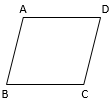
AB, BC, CD and DA are four sides of this quadrilateral
A quadrilateral is polygon having four sides and four corners.
(ii) four
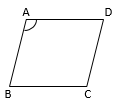
![]() A,
A, ![]() B,
B, ![]() C and
C and ![]() D are four angles of this quadrilateral
D are four angles of this quadrilateral
A quadrilateral is polygon having four sides and four corners.
(iii) Four, collinear
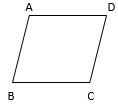
A, B, C and D are the four vertices of this quadrilateral.
In quadrilateral, no three out of four vertices are collinear. If all the vertices are collinear then we will get a line segment and if three out of four vertices is collinear, we will get a triangle.
(iv) two
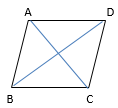
A diagonal is a line segment that joins two opposite vertices of the quadrilateral.
AC and BD are the two diagonals of the quadrilateral ABCD.
(v) opposite
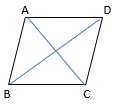
A diagonal is a line segment that joins two opposite vertices of the quadrilateral.
AC and BD are the two diagonals of the quadrilateral ABCD.
(vi) 360o
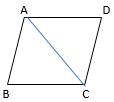
ABCD is a quadrilateral and AC is a diagonal. Now, we get two triangles
∆ ABC and ∆ ACD.
As we know that sum of angles of triangle is 180°
So, sum of two triangles will be 180° X 2 = 360°
i.e., the sum of the angles of a quadrilateral is 360°